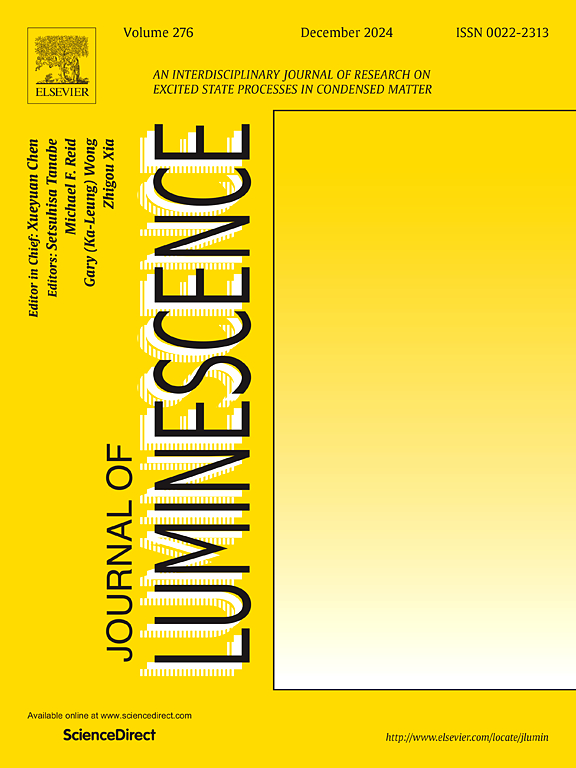InGaAs/GaAs量子阱中光-物质相互作用的热平衡
IF 3.3
3区 物理与天体物理
Q2 OPTICS
引用次数: 0
摘要
利用光谱分辨光致发光激发光谱研究了半导体InGaAs/GaAs量子阱中光子的吸收和发射之间的热平衡关系。光谱温度的提取适用于广泛的样品温度范围。当样品温度低于60k时,与实际样品温度存在偏差,这是由于激子和光激发载流子在量子阱的不均匀性中的局域化,阻碍了有效的弛豫和热化。这种消失支持了这一结论,即高温下的斯托克斯位移和热声子激子线的展宽。我们的结果为激光微腔中合金基量子阱实现光子玻色-爱因斯坦凝聚的适用性提供了强有力的证据。本文章由计算机程序翻译,如有差异,请以英文原文为准。
Thermal equilibrium of light-matter interaction in InGaAs/GaAs quantum wells
We investigated the thermal equilibrium relation between absorption and emission of photons in semiconductor InGaAs/GaAs quantum wells by employing a spectrally resolved photoluminescence excitation spectroscopy. Spectral temperatures were extracted for a wide range of sample temperatures. A deviation from the actual sample temperature is found for values below 60 K, which is attributed to the localisation of excitons and photoexcited carriers in the inhomogeneities of the quantum wells, preventing efficient relaxation and thermalisation. The vanishing supports this conclusion Stokes shift at higher temperatures and the thermal phonon broadening of the exciton line. Our results provide strong evidence for the suitability of alloy-based quantum wells in laser microcavities for achieving Bose-Einstein condensation of photons.
求助全文
通过发布文献求助,成功后即可免费获取论文全文。
去求助
来源期刊

Journal of Luminescence
物理-光学
CiteScore
6.70
自引率
13.90%
发文量
850
审稿时长
3.8 months
期刊介绍:
The purpose of the Journal of Luminescence is to provide a means of communication between scientists in different disciplines who share a common interest in the electronic excited states of molecular, ionic and covalent systems, whether crystalline, amorphous, or liquid.
We invite original papers and reviews on such subjects as: exciton and polariton dynamics, dynamics of localized excited states, energy and charge transport in ordered and disordered systems, radiative and non-radiative recombination, relaxation processes, vibronic interactions in electronic excited states, photochemistry in condensed systems, excited state resonance, double resonance, spin dynamics, selective excitation spectroscopy, hole burning, coherent processes in excited states, (e.g. coherent optical transients, photon echoes, transient gratings), multiphoton processes, optical bistability, photochromism, and new techniques for the study of excited states. This list is not intended to be exhaustive. Papers in the traditional areas of optical spectroscopy (absorption, MCD, luminescence, Raman scattering) are welcome. Papers on applications (phosphors, scintillators, electro- and cathodo-luminescence, radiography, bioimaging, solar energy, energy conversion, etc.) are also welcome if they present results of scientific, rather than only technological interest. However, papers containing purely theoretical results, not related to phenomena in the excited states, as well as papers using luminescence spectroscopy to perform routine analytical chemistry or biochemistry procedures, are outside the scope of the journal. Some exceptions will be possible at the discretion of the editors.
 求助内容:
求助内容: 应助结果提醒方式:
应助结果提醒方式:


